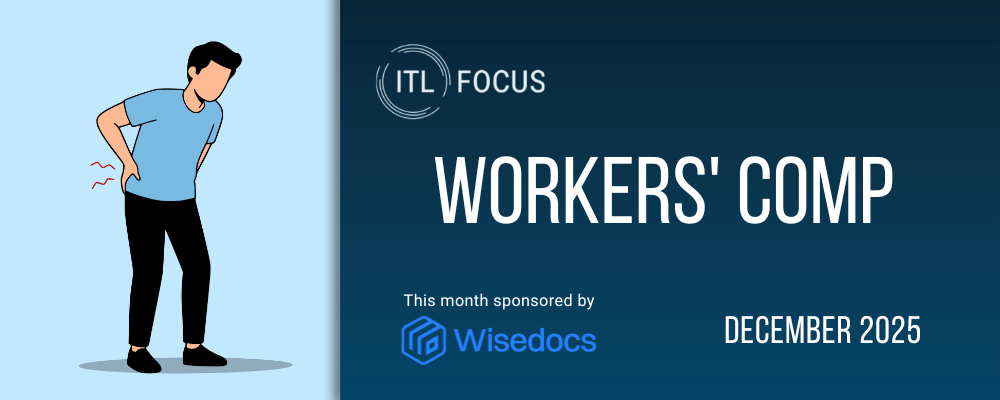|
|
Kyle Evancoe, vice president of sales at InvoiceCloud, is a proven SaaS leader helping insurance carriers simplify complex payment processes and digital interactions to drive improved customer satisfaction and financial results with next-generation inbound premium collection and outbound disbursement solutions.
|
Paul Carroll
From where I sit, claims is one of the hottest topics around. I'm hoping you’ll start us off by explaining why. What’s going on?
Kyle Evancoe
Primarily, as it did with so many other industries, the pandemic greatly accelerated claims transformation. Overnight, carriers were forced to rapidly implement some level of digital solution because nobody could go into the office. We did, however, hear a number of stories that firms were sending people to the office to deal with claims checks, further emphasizing the need to change the systems that in most cases had been in place for decades.
The expectation is that the consumer experience would be Amazon-like, even though insurance operations all have workflow complexities and legacy systems to manage through.
The recent hardened market and inflation, as well as the enormous impact of catastrophic losses, are further ratcheting up the pressure to reduce churn and maximize savings overall. All this forces claims further to the forefront of carriers’ minds.
Paul Carroll
Drilling down, what are the main things you think people ought to focus on when they try to figure out ways to improve the servicing of claims?
Kyle Evancoe
44% of people conduct research on what the claim experience is like with a carrier prior to even signing up to do business with them. Policyholder experience is at the top of the list for many.
I’ll give you a personal example. Within my family, we just had an auto claim. Carpets in the SUV were destroyed by an open sunroof and a particularly determined thunderstorm. With the significant water damage, we had to call the insurer, as that was the easiest way for us to get in touch with them. We then had to fight for an adjuster to get out there within a week and a half. The claim was extended three months due to parts being on back order, so we had to wait. When we went to get the rental car, the CSR [customer service representative] had booked us a small sedan for a family of four and two 100-pound dogs.
Three months pass, and we wait to receive the check in the mail. Well, wouldn't you know it, there's a lien holder, so now we've got to drive an hour and 40 minutes to a Walmart that had the branch of the credit union just to get a signature, a process they weren't familiar with and had to figure out. We pack everyone back into the car, drive to the branch, cash the check, and are finally able to pay for the claim.
That's the state of what many are looking at now from a regular personal lines auto claim.
This example is personal to me, and, yes, it's frustrating, but it's relatively benign. From an experience perspective, we should be thinking about the worst case. These are the stories we hear every day from carriers regarding the worst moment in someone's life: a family without a place to stay due to a catastrophe, the business owner who loses the retail space and all their inventory via hurricane, tornado, fires, flooding or whatever it may be. The expectation in that moment is the claimant has paid their premium for years and the insurance carrier is now going to provide the lifeline that's going to help them protect what's most dear. That may mean getting them food, or a place to stay for the evening or even inventory to get back up and running. Whatever the need, this is the moment when the insurance companies are expected to roll in like the white knight.
So there needs to be an effortless way for the policyholder to reach the carrier and an accelerated way for that carrier to accept, review and pay a claim. That includes a quick, if not instant, way to get funds to customers. For instance, if the bank isn’t open (due to a catastrophe) customers need digital options, right?
Improving the various aspects of the “claims process” are all steps in the right direction, but it all boils down to the fruition of the claim: getting the payment out to the customer in a way they can use, as quickly as possible.
Paul Carroll
In my experience, every dog thinks it's a lap dog, and I'm sure your 100-pound dogs loved the idea of climbing into a little sedan with you and your family.
The persistence of manual process in insurance has puzzled me for a long time. A mantra of mine for years has been, "Let's burn all the fax machines." Now I'm going to start calling for burning all the checkbooks, as well. Why is it taking so long to get us from manual payments to digital payments?
Kyle Evancoe
The crux of the issue for many is the pervasive paper-based processes most insurers still have in place today. Evolving those processes means we’re talking about changing or upgrading core systems and other technologies, workflows, staffing and instituting change management. These types of total transformations take a ton of time, money and resources across many departments to be successful. This is why 60-plus percent of carriers are still only able to make checks available for claims payments.
However, many are realizing the need now to make changes where they can and with the greatest impact, while deciding on their eventual path forward. The right payments partner (I may be biased here) can help a carrier quickly improve both the internal operational efficiencies and external experiences in months, not years. As I mentioned before, we can also act as a layer of protection for those experiences while larger-scale transformation occurs in the background, with folks external to the carrier none the wiser.
Paul Carroll
Do individuals prefer checks?
Kyle Evancoe
Paper checks are definitely not the preferred experience overall. Our own research in this year’s State of Online Payments Report shows that, of those paying online, 73% would prefer to receive claims payments directly into their bank account as opposed to 14% preferring paper check.
People want options: everything from direct debit and traditional ACH to virtual cards, and, yes, there are still those wanting a paper check. We are finding that people are adopting the more instant options readily and believe they will quickly become the standard.
Most people are looking for inline communication on a claim. They want to be able to receive a text letting them know their payment is available. They also want to be able to go into the text and not have to sign in. We find that having to develop logins and passwords and things like that -- we call them login walls -- are one of the major blockers, leading to delayed payment acceptance and poor experience. From our perspective, we've developed through that and can pre-authenticate people based on several factors. Clients can go right in, pick their method of payment and get their money.
Paul Carroll
Why is all this change happening now?
Kyle Evancoe
The insurance industry has lagged on technology as compared with other industries due to a vast amount of technical debt and inflexibility of legacy systems. Much of the initial change over the last several years went into policy and underwriting, refining the business that was being written. Now, all the pressures to create efficiencies and cost savings I mentioned earlier, and to provide an Amazon-like experience that balances technology and the human touch, are driving a focus on transformation around claims.
Beyond experience, insurance companies are realizing that $6 a check -- which is the average cost of sending out a check when you build in processing, clearing, reconciliation, all those other aspects -- directly reduces the bottom line.
Paul Carroll
What are the key technology threads that you’re focused on as you try to make payments more efficient and drive digital adoption?
Kyle Evancoe
From an experience point, continuing to evolve self-service options throughout the claims process will allow carriers to meet their customers where they are. Providing them greater transparency throughout the process, from filing a claim through choosing how they want to receive their money, will increase overall adoption of digital options, allowing everyone to experience the downstream benefits.
Real-time options are a focus of ours, and the true SaaS nature of our platform and long-term relationships with our processing partners allow us to rapidly adopt and make available new and faster payment technologies as they come out. These drive further digital adoption by policyholders.
Finally, we can integrate and work with ever-evolving core and ancillary technologies throughout a carrier’s tech stack as they drive greater digital transformation. Being true SaaS allows us to already be the outlier in many of the complaints we hear in the market about vendors running over implementation estimates or even being unable to implement due to obscene backlogs. This is a core strength of ours that we will continue to invest in as our current and new core system partners continue to evolve their platforms.
Paul Carroll
Would you project out a bit and describe what an idealized claim experience could be? I’m guessing you don’t think you need all the grief you experienced with your lap dogs and the ruined carpet in your SUV.
Kyle Evancoe
At the end of the day, two things provide the perfect experience. The carrier needs to process and close out the claim quickly, and the payment needs to get into the customer’s hand quickly.
My personal ideal claims experience, as much of our research points to, is mobile-based. I or anyone else will have the ability to report a claim via an app and quickly take some pictures to submit. Then the claim will be processed quickly and a decision made via AI or via an adjuster who is going to step in and take a quick look. I’ll have the ability to see where my claim is in the process and get that claim closed in a day, or something much quicker than what we see today. I also will have the ability to then receive a payment in line with the CSR agent or claims adjuster that I'm speaking with, possibly right from a text experience. Finally, I’ll have the ability to choose my instantaneous payment method.
The differentiators for carriers will be in how these things are accomplished. For example, continuing the personal auto example with a lienholder, a virtual payment option would need to have functionality and a network that allows them to sign off on my payment digitally, without me needing to hunt down the right branch or wait for a wet signature on a check.
Paul Carroll
Do you have any other thoughts or things we might not have brought up yet?
Kyle Evancoe
As carriers continue to focus on claims, due to the experience and cost-saving benefits, they are realizing that the experience funnels down to the point of payment and the speed at which they can provide the options their customers want.
Paul Carroll
Here’s hoping. Thanks, Kyle. This has been a great conversation.









